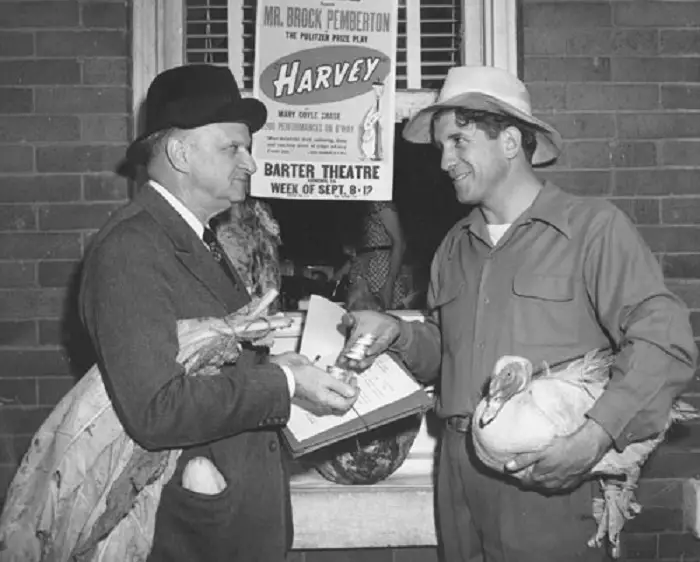As a kid, you probably have memories of trading food with fellow classmates as lunchtime. Maybe you were them or someone who envied them, but there was always that one kid who had the most envied food of all the lunchroom. Kids would approach them and try to swap their Oreos for Twinkies, and this was essentially a form of bartering that was taking place. But, just what does bartering mean?
That’s the question we’re going to be answering today. In our common world of cash, debit cards, and online processors such as PayPal and more, it’s very black and white as to how much money you need to spend in order to get a certain good or service in return. However, this isn’t necessarily the case with bartering.
Bartering is a much more subjective form of acquiring things, and although there’s not much presence of it in our world in 2017, it’s an act and art that will likely come in handy should we have ever find ourselves needing to put our survival skills to the test.
If you’ve ever wondered what bartering is or exactly how does bartering work, you’ve come to the right place.
What is the definition of bartering?
To start off, let’s go with something simple — what’s the definition of bartering?
According to dictionary.com, bartering is described as, “to trade by exchange of commodities rather than by the use of money.”
We couldn’t have said it any better ourselves.

The ins and outs of bartering can be quite difficult to understand at times, but the exact act of it is quite simple.
Instead of using actual money or a form of currency to purchase something and make it yours, you trade something else in exchange for the item that you want. This is exactly what takes place with school children every single day, and that’s because bartering is such a natural instinct for us as humans.
We associate all of the items that we have with a certain value. As such, we think that they’re worth so much if we were to exchange it in return for something else. This is a practice that isn’t nearly as common today as it once used to be (more on that later on), but it’s still something that every single person on this Earth is familiar with.
You might now just have learned the exact definition of the word, but chances are, you have felt that bartering instinct once or twice throughout your days.
How does a barter economy work?
Bartering may be second to using currency for buying things in the world that you and I live in today, but this isn’t the case for other parts of the world. There are many locations in which barter economies still exist, and in these areas, bartering is the name of the game when it comes to getting your hands on things that you want.
Hold up — what the heck is a bartering economy?
As the name suggests, a barter economy is an economy that’s entirely cashless. If you want a good or service, you don’t have money to purchase it. Instead, you exchange a good or service of your own.
There are typically common rates for things, but these are usually all negotiable depending on what’s being traded and who’s doing the trading. There’s no black and white value like you find with more common economies where there’s a price you have to pay and that’s that.
However, when existing in a barter economy, it’s important to remember that the art of bartering is reciprocal. In order to barter with someone, both parties need to be aware of the wants that each person has and is seeking to fulfill.
While this certainly can make bartering a bit more complex than what you would find in an economy like ours where we use cash rather than trading, it’s something that many people would rather put up with than wanting or having to deal with cash.
Bartering’s place in 2017
So, in the year 2017, how and where does bartering exist.

If you live in the United States, you’ll know that there’s not much of it at all with most retailers or outlets. If you go to Walmart and want to buy a new pair of shoes, you can’t simply ask an employee or manager if you can give them a jacket of your’s in favor for the shoes.
Nope. Your only option is to either pay the price that Walmart is asking for those shoes or not go home with them. In this sense, bartering doesn’t have a big place in the world.
However, when it comes to more personal exchanges, bartering is still very much alive and well.
Like we said earlier, every human has a natural instinct and understanding for what bartering is and how it works. As such, it comes very easily to most people.
This is seen with kids at the school lunch table, but it can also be found with people of all ages. Let’s say that your kid just bought a new video game but ended up not liking it that much. If their friend who wants that game trades your son or daughter two of their games for the new one, a barter just took place.
Similarly, let’s say that a web designer just created a brand new website for a local bakery. If the web designer has a good relationship with the bakery owners, he might accept free bread and other baked goods as a form of payment rather than normal cash.
And, as illegal as it may be in certain states, sexual favors are also exchanged in certain situations if something is wanted badly enough. That might sound a bit harsh and wrong to some people’s ears, but those are all different ways through which bartering exists in our world today.
Final Thoughts
So, to bring this all home, what does bartering mean? It’s the transaction of goods or services for other goods or services of a similar value. It’s still quite relevant in certain areas of our world, and all humans have a natural instinct for this habit. Bartering can require a bit of trial and error if you’ve never partaken in it before, but after a little practice and know-how, it’s very possible to get really good at bartering quickly.

